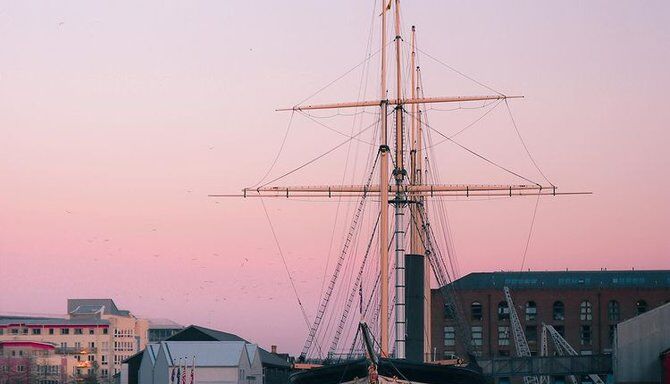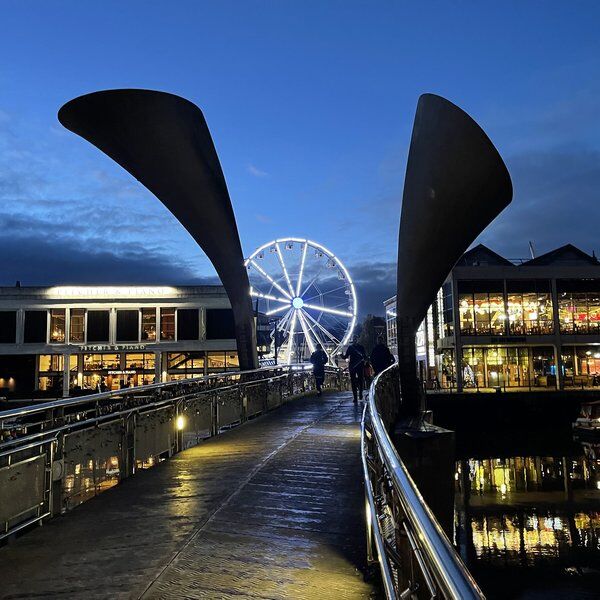
What is the SS Great Britain?
Brunel’s SS Great Britain is (and has been) many things: the world’s largest passenger ship; the first iron steamer to cross the Atlantic, one of the UK’s top ten museums, Bristol’s no.1 attraction. But above all else, it is an extraordinary time machine!
Since 2005 visitors have been invited to step back through the ages and immerse themselves in the true tales of the ship’s passengers: from the opulent First-Class, to the cramped and quarrelsome Steerage. No detail has been overlooked from authentic sights and sounds, to face-pinching smells.
The History of The SS Great Britain
The SS Great Britain in the Early Days
"The greatest experiment since the Creation."
Featuring a 1000hp steam engine, the most powerful yet used at sea; an iron hull, as opposed to a wooden one; and a screw propeller, instead of traditional paddle wheels, the Great Britain was a ship that changed history.

She was created for the Great Western Steamship Company, with the purpose of providing a transatlantic service between Liverpool and New York. A trip she completed in 14 days on the first try, which at the time was not considerably impressive.
At the time of her ‘float-out’, or launch, in 1843, two years before her maiden voyage, she was the largest vessel afloat.
Given that the passenger liner first took to the seas after the abolition of slavery in Britain, she played no part in that dark aspect of Bristol’s history.
It wasn't all 'plain sailing' for the SS Great Britain
In her first season, on a New York bound crossing, she lost a mast and three propeller blades in heavy weather. During the same crossing, she ran aground on the Massachusetts Shoals and had to be re-floated and re-fuelled before she could continue her journey.
Then, on the return trip to Liverpool, she lost four propeller blades. These blades had been part of Brunel’s six-bladed "windmill" design, a substitute for the initial four-bladed propeller. After the return trip, the original four-bladed propeller was reinstalled.
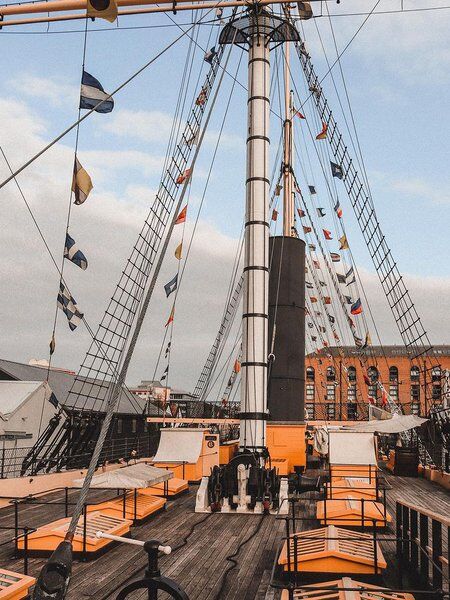
After a series of other repairs – to try and improve the efficiency and general comfort of the ship’s passage – she set off again for a second season in 1846. However, following navigational errors on her third trip that year, she was run aground in Dundrum Bay, off the coast of Ireland.
The £34,000 spent re-floating the luxury liner and returning her to Liverpool in 1847 exhausted the company's remaining reserves and so there she remained for several years.
Off to Australia!
“The Greyhound of the Seas.”
In 1850 the SS Great Britain was purchased by Gibbs, Bright & Co. to transport emigrants to Australia. Certain elements were replaced, including the engine, rudder, propeller and an extra upper deck was built, so that she could carry up to 700 passengers. To make the trips down under more cost-effective, the Great Britain relied more on sail power than her steam engine.

In 1852 the SS Great Britain embarked on her first trip to Melbourne and in the following 24 years, she made 32 voyages and transported over 16,000 emigrants. On average the return trip to Australia took 120 days – very competitive for the time – and passage was remarkably reliable. Passengers aboard the SS Great Britain were guaranteed to arrive on time and well ahead of any rival vessels, earning her the reputation as one of the fastest, most elegant and luxurious emigrant ships of her time.
A Change in the Tide
Between 1876 and 1886, the Great Britain – being no longer insurable for passenger use – was sold off and used as a cargo ship. For 10 years, she carried a variety of exports like coal and wheat between England and the West Coast of America.
But then things took a turn for the worse. In storms off Cape Horn, the ship became damaged beyond repair and was sold to the Falkland Islands Company (FIC). The FIC used her for storage until 1937, when she was towed to Sparrow Cove and abandoned.
Operation: Rescue the SS Great Britain!
There were several failed attempts to rescue the ship from rust and ruin in the 1930s and 1960s. But it wasn’t until 1970 that she was rescued from wreckage and carefully floated into Bristol on a huge pontoon (exactly 127 years to the day of her launch.)
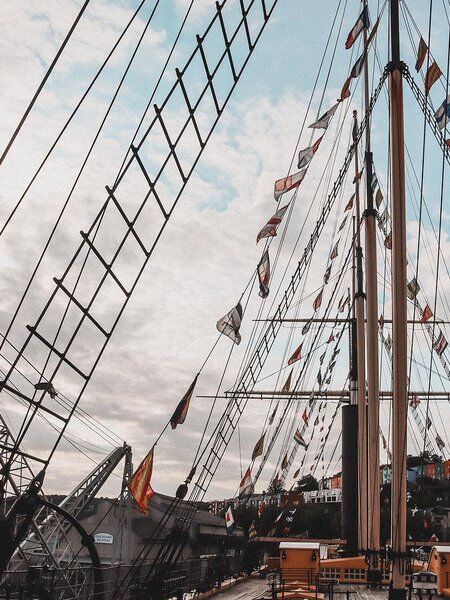
Life on Board the SS Great Britain
Another accident, one of the storemen chopped off his middle finger from first joint while opening a tin of herrings.
With so many people confined to such a small space, life on board a 19th century passenger ship wasn’t always easy. Tragedy and misfortune often struck those working and travelling on board.
Any illness, injuries, births, and deaths were recorded in the ship’s logbook.
Rats
For this some nights past several of the passengers in our cabin have been annoyed by rats, which even at times have come into our beds.
Courteously, rats did not discriminate between steerage and first class, presenting a problem right across the ship’s broad social spectrum.
The rodents would sneak onboard and roam freely, eating not just food but anything they could sink their teeth into. This often included the more conventional items such as socks and books. But one woman was awoken in the night to discover that a rat was clipping her toenails… and no, not with a pair of nail scissors!
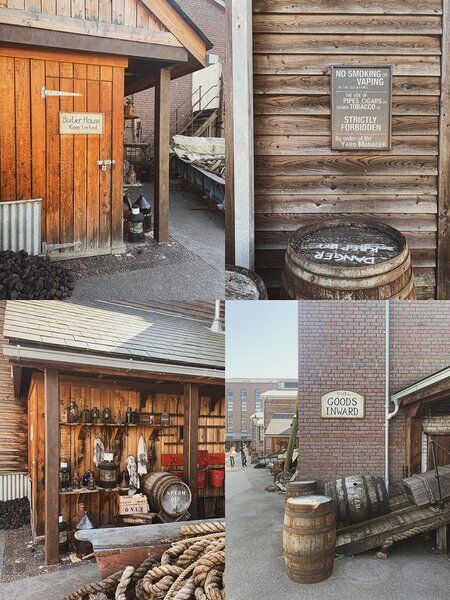
Noah’s Ark
The ship’s butchers could often be spotted preparing fresh meat for the passengers in first class. Passenger diary entries describe slimy buckets of offal, dead game birds, blood spatters and refer to the methods used as gruesome.
But meat went off quickly on lengthy voyages, so large numbers of live animals were carried for food. This gave the SS Great Britain the appearance of Noah’s Ark, instead of an emigrant ship. On one crossing in 1859, the ship carried:
- 133 sheep
- 38 pigs
- 2 bullocks
- 1 cow
- 420 fowl
- 300 ducks
- 400 geese
- 30 turkeys
Diaries revealed that the ship smelt and sounded like a barnyard!

The Worlds Smelliest Museum
Given that the ship was carrying a boatload of passengers, workers AND livestock, for up to 60 days at a time, it's no wonder the place smelt like a farm. In fact, it probably smelt worse!
Having life-like recreations of even the whiffiest stenches can be really important when helping museum visitors understand the atmospheres and conditions of the past. Knowing the very flavour of the air people breathed can help us put ourselves in their shoes.
Like sounds, scents have a powerful effect on the human brain. They can drum up feelings of nostalgia – evoking memories and emotions – or as with the SS Great Britain, transport us to another time and place. If an emigrant crossing in 1856, gagging at the smell in their crowded cabin, then so can you!
Visitors to the museum today can step into the shoes of the Victorian passengers with every sniff of freshly baked bread and waft of stale, dirty linen in steerage.
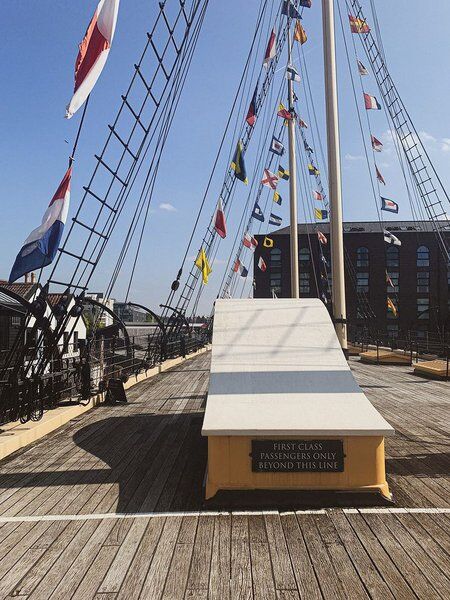
We already have 15 smells across our museums, you can get a whiff of Engine oil in the Dockyard and of course discover the stench of the famous vomit in stewardess Annie Green’s cabin.
These particular smells are crafted by AromaPrime, who create specific scents for museums and tourist attractions. Other scents at Brunel’s SS Great Britain include:
- Smoke in Brunel’s Duke Street Office
- Cooked bacon in the galley
- Horse manure in the forward hold
- Urine from the communal toilet
- The clinical smell of Carbolic soap in the surgeon’s cabin
- Rum in the gambler’s cabin
Other scents under consideration are:
- Dark chocolate and brandy
- Roast beef
- Boiled cabbage
Our thoughts...
Dominating Bristol’s historic waterfront, within Brunel’s original Dock Office, the SS Great Britain is a wonderful and important museum. The £7.2m attraction is the world’s most significant Brunel collection. Featuring 6 galleries that exhibit around 150 of his personal artefacts, the Great Britain provides a glimpse into and celebrates the life, family and interests of the iconic engineering genius.

Interested in finding more places like this? Try one of our Bristol Treasure Hunts - untangle cryptic clues as a team, as you are taken on a journey to the most unique, unusual and bizarre corners of England.
